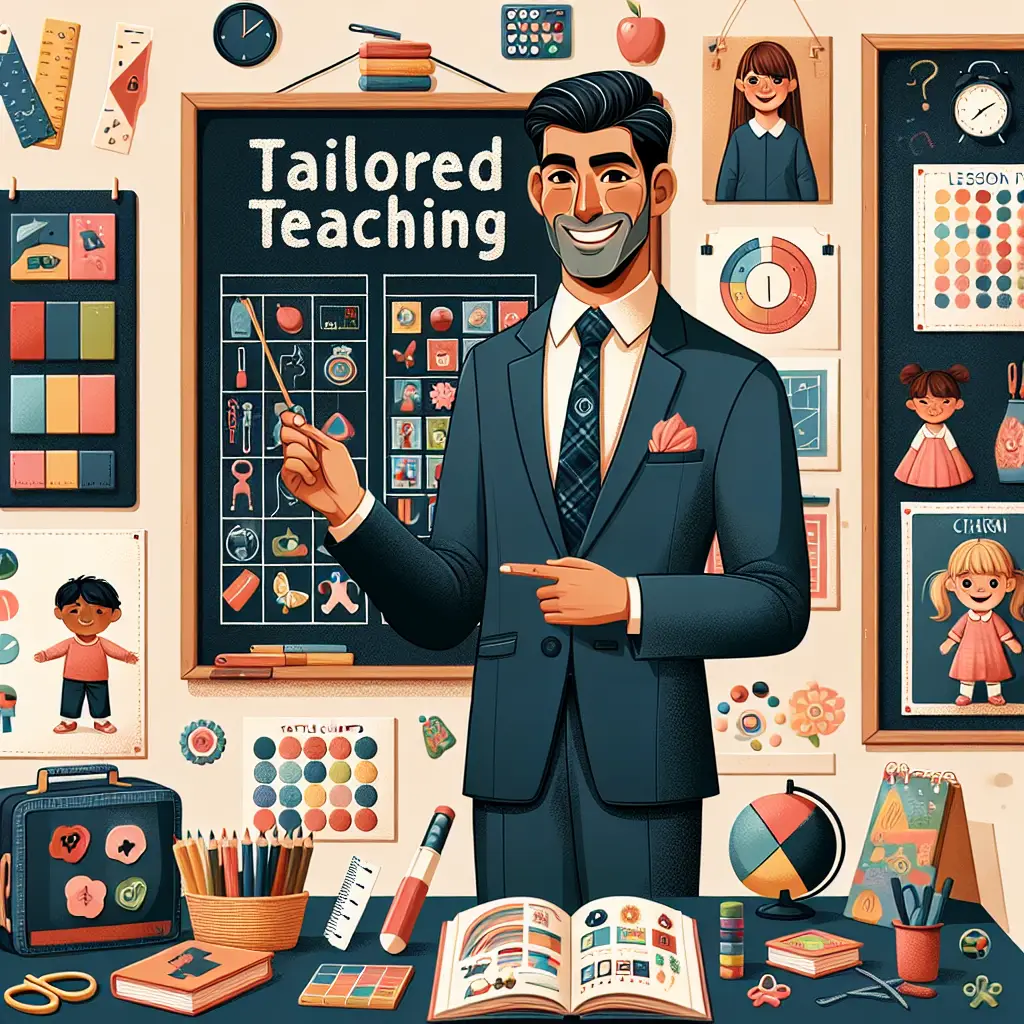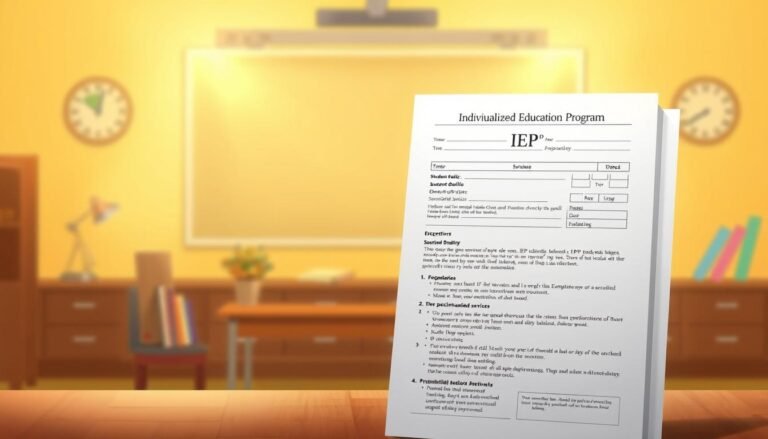
Tailored Teaching: How to Create Lesson Plans that Support Children with Learning Disabilities
Introduction
In an educational landscape that champions diversity and inclusivity, the importance of tailored teaching can never be overstated. Imagine walking into a classroom where every student feels valued, understood, and supported—where learning isn’t just a one-size-fits-all approach but a dynamic, tailored experience designed to meet individual needs. For children with learning disabilities, this vision becomes a vital necessity. This article, "Tailored Teaching: How to Create Lesson Plans that Support Children with Learning Disabilities," aims to empower educators with practical strategies, inspiring insights, and real-world applications to craft lesson plans that resonate with every learner.
The Importance of Tailored Teaching
Children with learning disabilities often face unique challenges that can hinder their academic success if not addressed adequately. Unlike their peers, they might process information differently or require additional time and support to grasp concepts. Tailored teaching not only acknowledges these differences but actively seeks to accommodate them, creating an environment where all students can thrive.
Understanding Learning Disabilities
Before diving into the specifics of lesson planning, it’s crucial to understand what learning disabilities encompass. According to the Learning Disabilities Association of America, learning disabilities affect how individuals with average to above-average intelligence process, retain, or express information. These disabilities can manifest in various forms, such as:
- Dyslexia: Difficulty with reading, spelling, and writing.
- Dyscalculia: Challenges with math and numbers.
- Dysgraphia: Problems with handwriting and organizing thoughts in writing.
- Auditory Processing Disorder: Difficulty in understanding spoken language.
- Visual Processing Disorder: Trouble interpreting visual information.
Armed with this knowledge, educators can create lesson plans that not only respect but celebrate cognitive diversity in the classroom.
Strategies for Tailored Teaching
1. Assess Individual Needs
Creating effective lesson plans begins with assessment. Gathering information about each student’s learning style, interests, and specific challenges can inform your approach.
Case Study: In a middle school classroom, Ms. Johnson used a variety of assessment tools, including surveys, observation, and student interviews, to identify the learning preferences of her students. This data enabled her to tailor lessons that incorporated visual, auditory, and kinesthetic elements, catering to all types of learners.
Table 1: Assessment Tools for Identifying Learning Needs
| Tool | Purpose | Benefits |
|---|---|---|
| Surveys | Gauge student interest and preferences | Allows for student voice |
| Observations | Understand behaviors and participation | Provides real-time insights |
| Standardized Tests | Measure academic skills | Offers quantifiable data |
| Interviews | Gather personal experiences | Builds rapport and trust |
2. Set Clear Learning Objectives
Once needs are assessed, setting specific, measurable objectives becomes essential. Tailored teaching demands clarity in what students should achieve by the end of each lesson.
Case Study: In a third-grade classroom, Mr. Patel implemented SMART (Specific, Measurable, Achievable, Relevant, Time-bound) goals to support his students with learning disabilities in reading. By focusing on individualized objectives, he could track progress and adjust strategies to maintain student engagement.
3. Use Multisensory Instruction
Children with learning disabilities often benefit from multisensory approaches that incorporate various teaching modalities.
Case Study: A special education teacher, Mrs. Foster, designed a spelling lesson that involved visual (words on a board), auditory (chanting sounds), and kinesthetic (using letter tiles) components. The result was a significant improvement in her students’ ability to spell accurately, highlighting how tailored teaching can enhance learning experiences.
4. Incorporate Technology
Embracing technology in the classroom can provide customized learning experiences for students with learning disabilities.
Case Study: At a local high school, Mrs. Lane introduced apps like Read&Write and Mathway during lessons. These tools offered students personalized support and alternative ways to approach assignments, promoting independence and confidence.
Chart 1: Benefits of Technology in Tailored Teaching
| Technology Type | Benefits |
|---|---|
| Adaptive Learning Software | Customizes learning paths |
| Educational Apps | Engages students with interactive materials |
| Online Resources | Provides additional practice |
| Virtual Reality | Offers immersive learning experiences |
5. Foster Positive Relationships
Emotional and social dynamics significantly influence learning outcomes for children with disabilities. Building strong, supportive relationships fosters a safe environment for academic risk-taking.
Case Study: In an inclusive classroom, Mr. Hernandez prioritized relationship-building activities alongside academic content. His students reported feeling more comfortable asking for help, demonstrating that tailored teaching extends beyond curriculum to encompass emotional intelligence.
6. Allow for Flexibility and Adaptation
Flexibility is a cornerstone of tailored teaching. Be prepared to adapt lesson plans on-the-fly based on students’ responses and needs during the lesson.
Case Study: In a science class, Ms. Tran started with a hands-on experiment. When she noticed some students were overwhelmed, she paused the activity to provide additional instructions and encourage peer support. This quick adaptation allowed all students to succeed.
Practical Tips for Creating Tailored Lesson Plans
Creating lesson plans that support children with learning disabilities requires thoughtfulness and creativity. Here are some tips to enhance your planning:
1. Break Lessons into Manageable Segments
Shorter lessons with specific focuses can help maintain engagement and reduce anxiety.
2. Utilize Visual Aids
Incorporate charts, diagrams, and graphic organizers to support understanding and retention.
3. Group Work
Promote collaborative learning through strategic grouping that pairs students with varied strengths and abilities.
4. Provide Extra Time
Allow students the opportunity to work at their own pace, particularly with tasks they find challenging.
5. Regular Feedback
Implement systems for regular feedback that encourage students to reflect on their learning process.
Conclusion
Tailored teaching is not merely a strategy; it’s a commitment to nurturing every child’s unique learning journey. By understanding the specific needs of children with learning disabilities, educators can develop effective lesson plans that inspire and empower students. As we’ve explored the importance of assessment, clear objectives, multisensory instruction, technology usage, relationship-building, and flexibility, it’s clear that tailored teaching offers myriad pathways for fostering learning success.
Educators, as you take these insights into your classrooms, remember: every effort you invest in tailoring your teaching methods can transform lives, igniting a passion for learning that lasts a lifetime.
FAQs
1. What are learning disabilities?
Learning disabilities are neurologically-based processing challenges that impact how individuals understand, store, and express information.
2. How can I identify if a child has a learning disability?
Consider any consistent difficulties a student may have in specific subjects compared to peers, as well as feedback from standardized tests and it’s essential to speak with special education professionals when concerns arise.
3. What is multisensory instruction?
Multisensory instruction engages multiple senses—visual, auditory, and kinesthetic—during learning to enhance comprehension and retention.
4. How can technology help students with learning disabilities?
Technology can offer personalized learning experiences, tools for organization, and interactive materials that engage students effectively.
5. Is flexible grouping effective in the classroom?
Yes! Flexible grouping allows educators to tailor instruction based on students’ varying skill levels, promoting collaboration and peer learning.
6. How should educators approach lesson adaptations?
Educators should remain observant and responsive during lessons, ready to modify instruction based on student needs and participation levels.
By embracing tailored teaching strategies, educators can create a bright and inclusive future for all children, celebrating the rich tapestry of learning styles and capabilities.
















